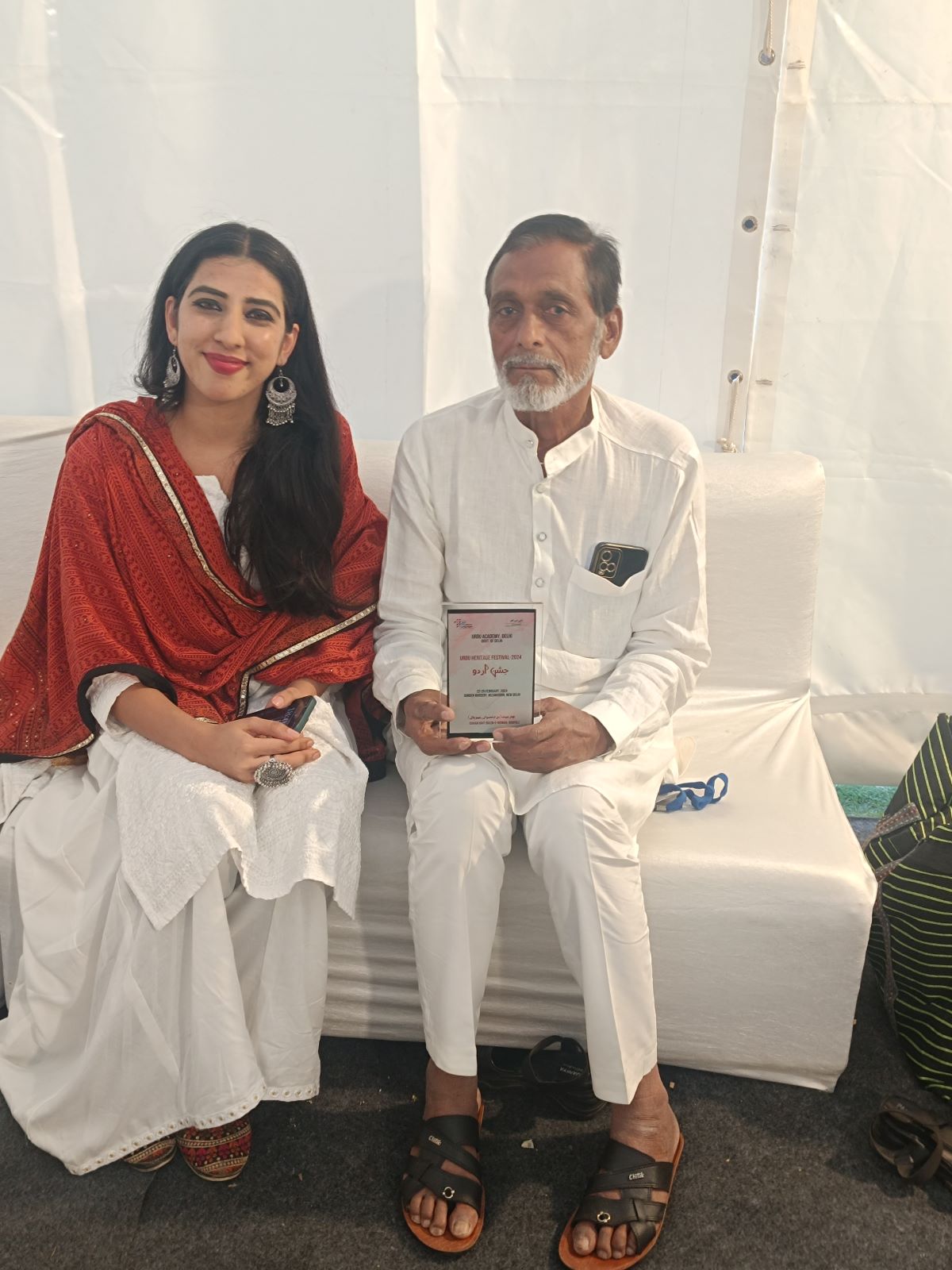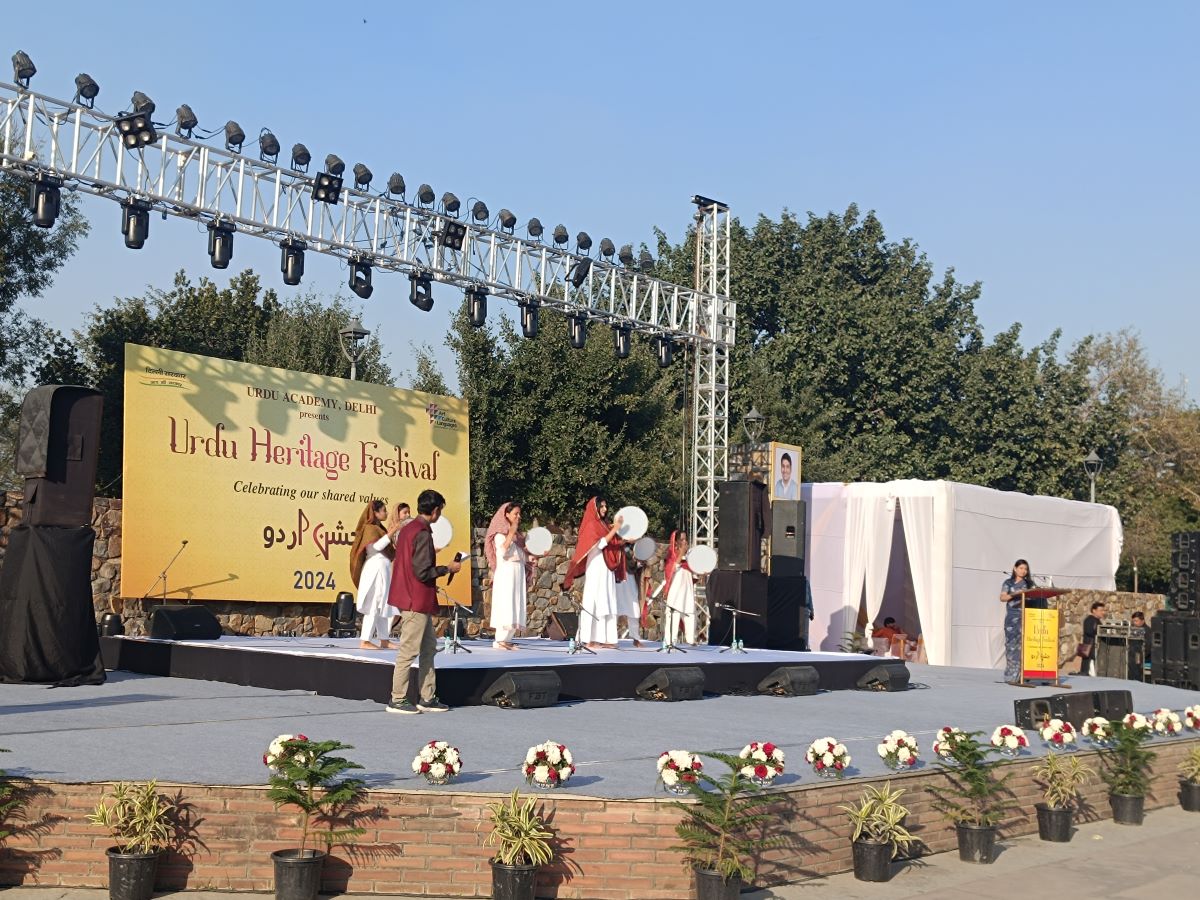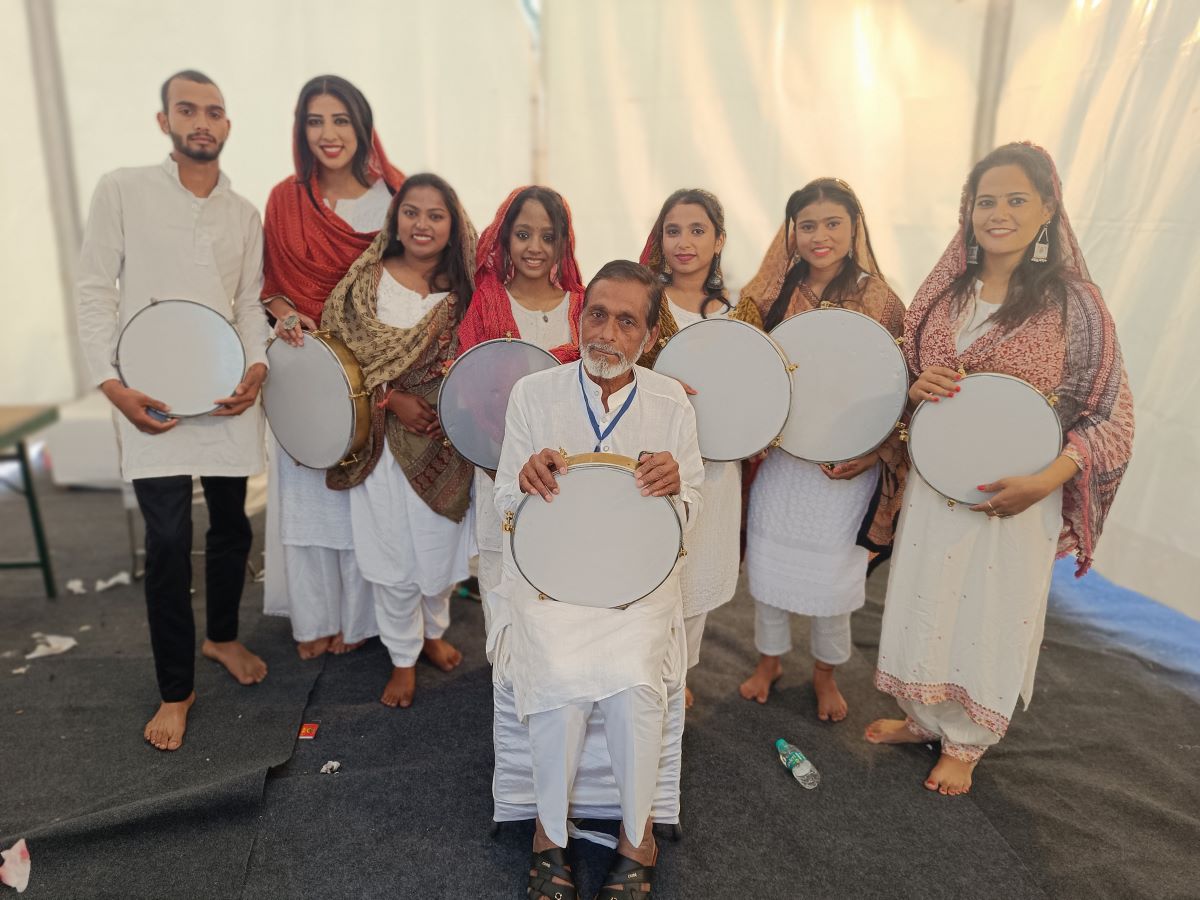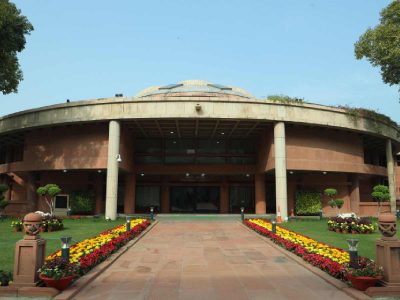Bazme Niswa, a women’s group from Bhopal performing Chaar Bait, which is a traditional folk art form involving the fusion of verse, melody, and rhythmic beats of daf (frame drum instrument), captivated the audience with their unique interpretation of the timeless art form at the Urdu Heritage Festival held at Sunder Nursery. The event was organised by the Delhi government to celebrate the Urdu language.
Bazme Niswa’s performance involved rendition of ghazals by renowned poets like Ghalib, Shahid Bhopali, among others. The audience was particularly enamoured by the ghazal Na Wo Aaye Na Mein Jau by Sheri Bhopali. The performance by the female artists received significant acclaim, adding a fresh and distinctive perspective to this age-old art, which was once prevalent in places with predominantly Pathan population and culture like Bhopal, Tonk, Rampur, Amroha, Moradabad, and Chandpur.
With origins in Afghanistan, where it was also used as a leisure activity by soldiers during battles, Chaar Bait travelled to India, incorporating elements of Urdu, Hindi, and Brij dialects.
Soofia Wahidi, a retired history teacher who hails from Bhopal but lives in Delhi nowadays, provided valuable insight into the intricacies of Chaar Bait.
“A group of six-eight artists, called the Akhada, perform the Chaar Bait, which is called Chaar Baita in Pashto. A single bait includes four lines to form a band or bait, and a typical nazm would include four such baits along with a main mukhda,” explained Soofia.
Chaar Bait was traditionally performed by male artists, with women rarely involved. But Bazme Niswa, comprising six talented artists in Moulshree, Vaishali Thapa, Anjali, Bihu Anand, Divya Prajapati, and Aarti Dhurve, has broken the glass ceiling.
Moulshree, a member of the group, revealed that the initiative was taken by Nusrat Mehdi, Director of Madhya Pradesh Urdu Academy, with Bazme Niswa being formed in 2018.

However, activities of the group halted due to the COVID-19 pandemic. In 2023, Moulshree and Nusrat revived the group through a workshop and restarted their performances.
On September 13 last year, Bazme Niswa created history by performing at the Gandhi Bhawan in Bhopal, marking their return to the stage after a hiatus. Since then, they have completed four successful shows across India. The group takes immense pride in being the torchbearers of an ancient art form and is dedicated to its revival.
Ustad Muhktar Ahmed, their mentor, has been an integral part of their journey. With a career spanning over four decades, he has been training Chaar Bait artists since 1980.
“I have been performing Chaar Bait since the 1980s. This art is inherited from my family. My maternal uncle Qudrat Ullah Khan was a known Chaar Bait artist of Bhopal Gharana. After his death, Nusrat Mehdi tied a turban on my head and I became the Chaar Bait master,” said Ahmed to Patriot.
“I have trained many artists but when Nusrat Ma’am called me to train girls in Chaar Bait, I was confused and shocked as this art form was never presented by women before and we all were aware that this dying art is male dominated.”
The transition to teaching girls Chaar Bait came with its own set of challenges and criticism from the local Chaar Bait parties in Bhopal, who were accustomed to male-dominated space. However, Mukhtar’s resolve never wavered.
“But I took up the challenge as I believe if I have some skill and I pass it on to another person that is Sawaab-e-Jaria (a good deed leading to an ongoing reward) for me. I started training these girls and faced a lot of criticism from people. They removed me from the Chaar Bait parties of Bhopal but I never hesitated and kept giving them training,” recalled Ahmed.

He began by focussing on perfecting their pronunciation and training them in playing the daf and singing ghazals.
The team acknowledged his invaluable support and guidance.
“Yes, we faced a lot of criticism but our Director and Ustaad are our pillars of strength. Ustaad has supported us at every step. We are thankful and grateful to the Urdu Academy Madhya Pradesh for trusting in us,” said Moulshree, the lead singer and artist in Bazme Niswa.
Despite hailing from different backgrounds and having successful careers – Vaishali is a teacher and Bihu is a kathak dancer, the girls are passionate about Chaar Bait.
They conduct free workshops in Bhopal, encouraging other girls to join the and breathe life back into this dying art.





